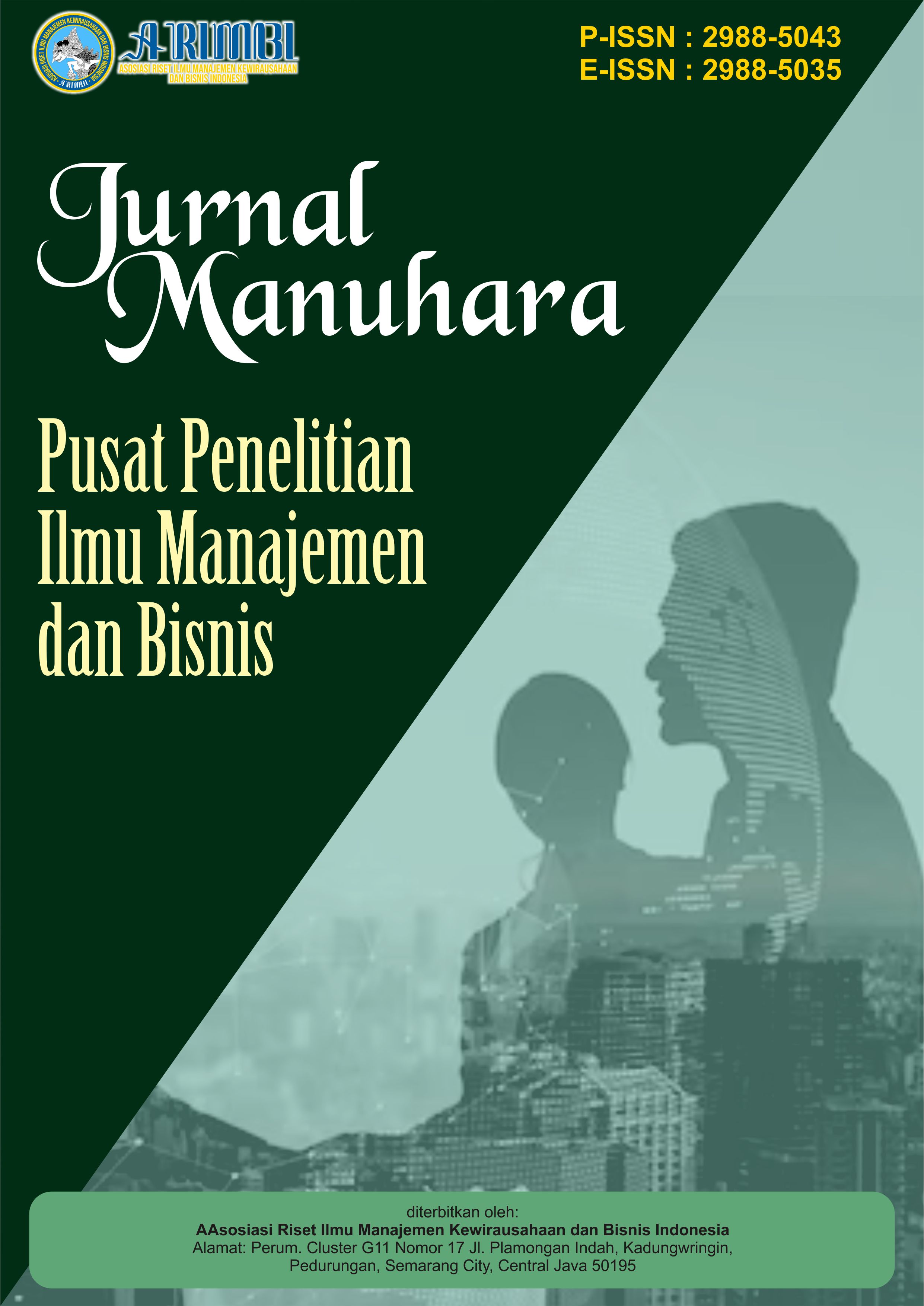Pengaruh Literasi Keuangan terhadap Minat Investasi Generasi Muda di Pasar Modal Indonesia
DOI:
https://doi.org/10.61132/manuhara.v3i3.2028Keywords:
Capital Market, Financial Education, Financial Literacy, Investment, Young GenerationAbstract
Interest in investing in Indonesia's capital market has increased, especially among the younger generation. However, this phenomenon has not been fully accompanied by adequate financial literacy. This study aims to analyze the effect of financial literacy on young people's investment interest in the capital market. The study used a quantitative approach with a survey method of 250 respondents aged 18-30 years in the Jabodetabek area. The instrument was a Likert questionnaire measuring three dimensions of financial literacy: knowledge, attitude, and behavior. Data were analyzed using multiple linear regression. The expected results include identification of the most influential dimensions of literacy, as well as financial education recommendations. This research contributes to OJK policy and digital technology-based education as a form of protection for young investors.
Downloads
References
Badan Pusat Statistik. (2024). Statistik angkatan kerja Indonesia 2024. BPS. https://www.bps.go.id
Bareksa. (2023). Platform investasi online & edukasi keuangan untuk investor muda. https://www.bareksa.com
Dewi, I. A. A. P., & Susilawati, N. W. (2020). Pengaruh literasi keuangan terhadap keputusan investasi mahasiswa. Jurnal Ilmiah Akuntansi dan Bisnis, 15(1), 1–10. https://doi.org/10.24843/JIAB.2020.v15.i01.p01
Handayani, S., & Nugroho, R. (2021). Community-based schemes for informal workers' protection in Southeast Asia. Social Policy and Administration, 55(2), 329–346. https://doi.org/10.1111/spol.12628
Indonesia Stock Exchange. (2024). Statistik pasar modal Indonesia 2020–2024. https://www.idx.co.id
Kustodian Sentral Efek Indonesia. (2024). Laporan statistik investor pasar modal 2024. KSEI. https://www.ksei.co.id
Lusardi, A., & Mitchell, O. S. (2014). The economic importance of financial literacy: Theory and evidence. Journal of Economic Literature, 52(1), 5–44. https://doi.org/10.1257/jel.52.1.5
Maharani, D., & Fadilah, N. (2022). Literasi keuangan digital dan dampaknya terhadap perilaku keuangan generasi milenial. Jurnal Ekonomi dan Bisnis Digital, 3(2), 87–95. https://doi.org/10.31294/jebd.v3i2.12345
Nurjanah, S., & Putra, R. Y. (2021). Efek penggunaan e-wallet terhadap perilaku konsumtif mahasiswa. Jurnal Riset Keuangan dan Perbankan, 9(1), 25–34. https://doi.org/10.22225/jrfp.v9i1.5678
OECD. (2018). OECD/INFE toolkit for measuring financial literacy and financial inclusion. OECD Publishing. https://www.oecd.org
Pratama, Y., & Indrastuti, S. (2022). Minat investasi mahasiswa dan faktor yang mempengaruhi. Jurnal Riset Ekonomi dan Bisnis, 15(2), 45–55. https://doi.org/10.23969/jreb.v15i2.5893
Rahmawati, D., & Nugraheni, R. (2023). Literasi keuangan digital dan keputusan pembelian pada marketplace di kalangan mahasiswa. Jurnal Ilmu Ekonomi Digital, 1(1), 12–21. https://doi.org/10.31092/jied.v1i1.7412
Suryadi, T., & Lestari, R. (2020). Analisis pengaruh promosi dan diskon terhadap keputusan pembelian di Shopee. Jurnal Pemasaran Digital, 4(3), 55–62. https://doi.org/10.33853/jpd.v4i3.8891
TikTok Finansial. (2024). #FinTok: Komunitas edukasi finansial generasi muda Indonesia. https://www.tiktok.com/tag/fintok
Yayasan PEKKA. (2023). Program literasi keuangan dan perlindungan sosial untuk perempuan kepala keluarga. https://www.pekka.or.id
Downloads
Published
How to Cite
Issue
Section
License
Copyright (c) 2025 Jurnal Manuhara : Pusat Penelitian Ilmu Manajemen dan Bisnis

This work is licensed under a Creative Commons Attribution-ShareAlike 4.0 International License.






